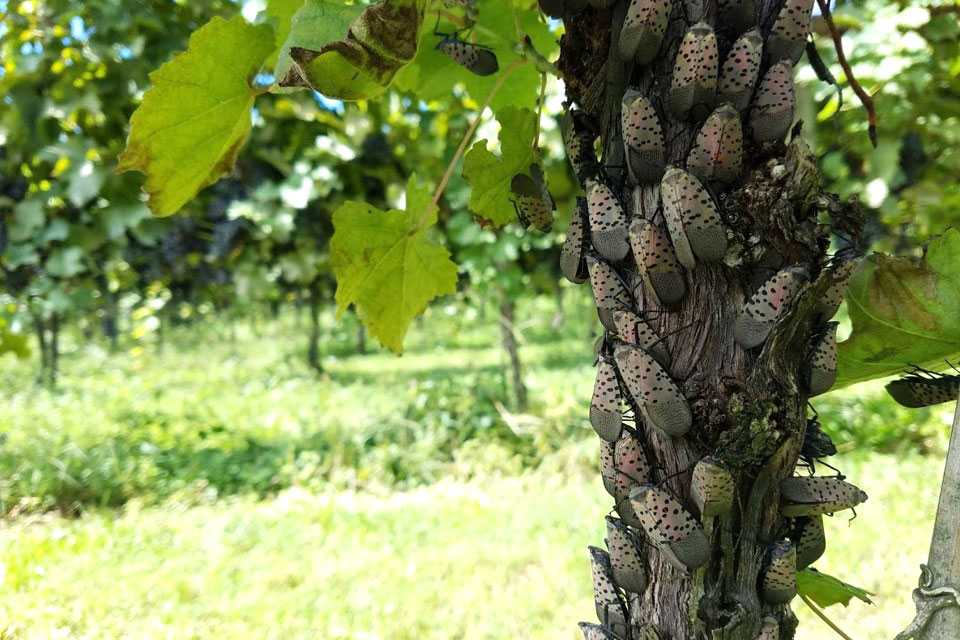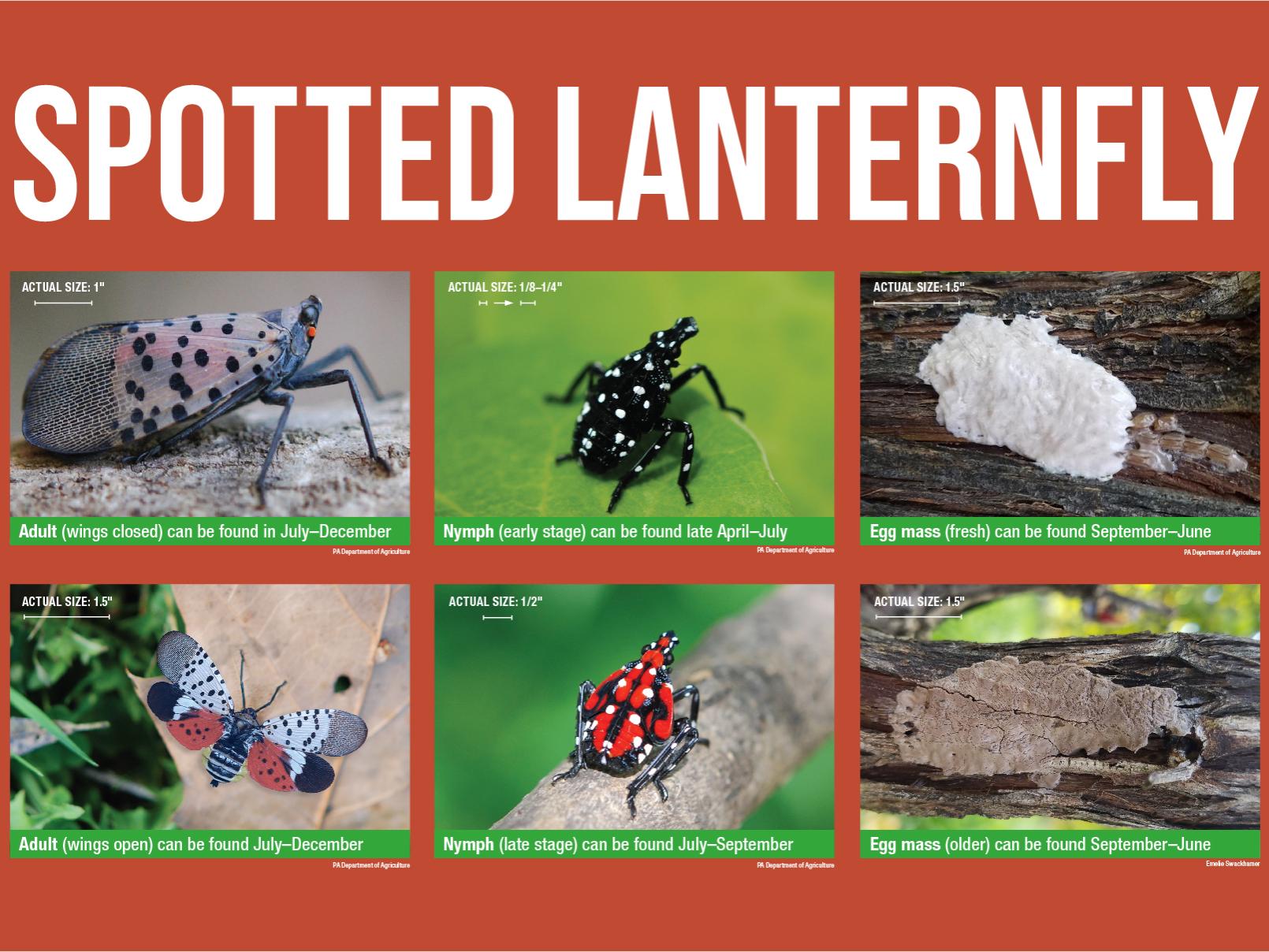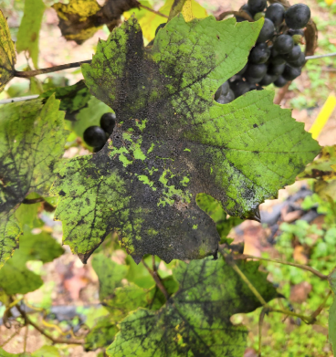At Denver’s Office of the City Forester, it’s our job to protect the trees. Like the emerald ash borer, another invasive pest is threatening to invade our urban canopy. And these pests are coming for more than just your ash. We’re here to help teach Denver residents about the spotted lanternfly, how to combat it and what to do if you spot it.
What is the spotted lanternfly?
The spotted lanternfly is an invasive plant-hopper that feeds on a variety of plants and trees, including tree of heaven, fruit trees, maples, oaks, pines and many more. It’s native to Asia and was first detected in the United States in 2014.
What you need to know
- It can cause serious harm to plants and trees. It might not bite or sting, but it can cause significant damage to our plants and trees, like wilting, oozing, leaf curling and sometimes even death to tree saplings, tree of heaven and grapevines.
- It’s not here. Yet. However, they have been found in 11 states, and that number will grow.
- We’re on the lookout. We’re keeping an eye out for the insect and we’re asking you to do the same!
- We need your help. The key to preventing damage to our trees is catching the spotted lanternfly before it settles on a plant host. So, inspect not only your trees and plants, but also your cars, trailers and trucks for signs of the pest or its egg masses. If you believe you have identified the spotted lanternfly on your property, please contact Denver’s Office of the City Forester at forestry@denvergov.org or (720) 913-0651.

Credit: Growing Produce by Gary Gao: https://www.growingproduce.com/fruits/spotted-lanternfly-a-major-threat-to-fruit-crops-in-the-midwest/, photo by Heather Leach Image: Mass gathering on grape trunk with adult on leaf.
 Credit: Eric R. Day, Virginia Polytechnic Institute and State University, Bugwood.org; https://portal.ct.gov/DEEP/Forestry/Forest-Protection/Spotted-Lanternfly Image: Wilting, yellowing of leaves on a walnut tree caused by the insect.
Credit: Eric R. Day, Virginia Polytechnic Institute and State University, Bugwood.org; https://portal.ct.gov/DEEP/Forestry/Forest-Protection/Spotted-Lanternfly Image: Wilting, yellowing of leaves on a walnut tree caused by the insect.
How to spot it
- Its egg masses typically appear September through June, one generation per year.
-
- Young egg masses are naturally camouflaged by what appears to be a smear of mud. Look for them on trees, rocks, vines, posts, vehicles, essentially anywhere. It’s much easier to get rid of them at this stage!
- Older egg masses become inch-long columns of brownish seed-like deposits. These contain anywhere from 30-80 eggs!
- It hatches April – June and goes through a few stages of growth before maturing to adulthood.
- Adult spotted lanternflies emerge in July. It is black with brightly colored hindwings (red, black and white) and grey forewings with black spots, and capable of flight but is more often found jumping. It’s unique looking, but don’t be taken in by its good looks—it can cause serious damage to our trees.

Credit: Penn State: https://www.psu.edu/news/impact/story/extension-educators-offer-tips-managing-spring-spotted-lanternfly-egg-hatch/
Image: Various life stages of the spotted lanternfly.
Other symptoms that might be a sign of the spotted lanternfly:
- Plants that ooze and have a fermented odor (yuck!)
- Buildup of honeydew, or sticky fluid. Fun fact: the spotted lanternfly’s, um, excrement is referred to as “honeydew” because it attracts ants, bees, flies and wasps. Honeydew? More like “Honey don’t!”
- Sooty mold, or a fungal disease that grows on plants and other surfaces covered by honeydew, resembling—you guessed it – a dark layer of black soot.
What plants are at risk?
Unfortunately, the spotted lanternfly has been recorded feeding on more than 70 different plant species, so it can be hard to narrow down where to find it. However, its preferred host is the tree of heaven (Ailanthus altissima), an invasive plant prevalent in the Denver metropolitan area. Silver maples (Acer saccharinum) can also be popular for the spotted lanternfly to feed on in the fall.
If one of these trees are on your property, it’s especially important to scout and monitor it for spotted lanternflies. Not sure if you have a tree of heaven? PennState Extension has a handy guide to help you out, as well as a YouTube video.
What to do if you spot it?
- See something? Say something! Contact Denver’s Office of the City Forester at forestry@denvergov.org or (720) 913-0651 if you believe you have identified the spotted lanternfly on your property.
- Get rid of the eggs or insects. Smash ‘em, squish ‘em or spray ‘em (only with insecticides registered by the U.S. Environmental Protection Agency and approved for that usage).
- Replace your tree of heaven, whenever possible.
Additional Resources:
- Colorado Department of Agriculture’s general information on this pest, a good identification guide and links to additional resources.
- PennState Extension’s Management Guide with in-depth information on how to identify, treat and prevent infestation.
- The USDA Animal and Plant Health Inspection Service’s overview of the spotted lanternfly.
Bottom line, this pest has few known natural enemies in the wild to reduce populations naturally, so the best we can do is make sure when we find it, we get rid of it ASAP, and lessen the number of invasive tree of heaven (Ailanthus altissima).




